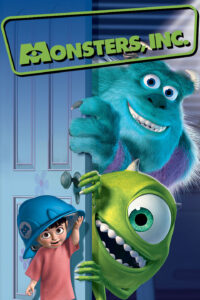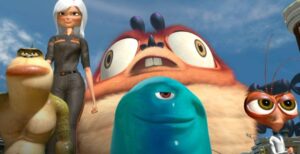When I think about horror comedies or just humorous horrors, what immediately comes to mind is parody films, such as Scary Movie franchise, films with particularly bad special effects/acting – some of the early horrors but also some classic ones such as Ed Wood’s Plan 9 from Outer Space – and some animated films/series such as Scooby-Doo or The Nightmare Before Christmas. I believe that these movies are funny because in all of them the character of the ‘monster’ plays a major role in the plot, but in these films, this monster is simply not frightening. As Noël Carroll writes: “Subtract the threatening edge from a monster or deflect our attention from it, and it can be reduced to a clownish, comic butt, still incongruous, but now harmless, and, as a result, an appropriate object of laughter.” [1]
Therefore, even the scariest creatures from folklore, novels or pure horror films, can become humorous if we start mocking them – as they do it in parody films – or if we do not believe in its threatening nature due to inauthentic make-up/costumes/CGI or performances. Finally, when we see monsters in animated films, there is even a bigger separation between fiction and reality: there is more distance between the viewer and animated characters who live in another, made-up animated world which makes the character of the monster appear much less dangerous. Nevertheless, there are still some animated horrors that can truly terrify the audiences, for instance, the recent Netflix series, Love, Death and Robots.
Animators often use monsters in their films, even if they are made for very young audiences. By removing the fear and the element of mystery, filmmakers turn these creatures into friendly, even comedic characters as in the films Monsters, INC. and Monsters vs. Aliens (images and link below). By using humour and specific styles of animation, the artists manage to transform kids’ most common fears into something safe and cheerful. Animation, in this case, helps to “subtract the threatening edge” which Carroll talks about in his article. [2]


1. Noël Carroll, “Horror and Humor,” The Journal of Aesthetics and Art Criticism 57, no. 2 (1999): 156.
2. Ibid.
I decided to connect your two ideas here of funny looking monsters with “particularly bad special effects”, which made me think of the various monsters found in TV shows like Power Rangers – and, indeed, the Japanese counterparts like Super Sentai and Ultraman. These are shows aimed at children, with a monster-of-the-week being easily dispatched by the heroes. Yet they always look horrendously cheap, the camp aesthetics turning what would be scary creatures into objects of hilarity.
I think your point about animation is really interesting! It makes me wonder whether the audience has to feel convinced that the monster could be a genuine threat in the real world for them to feel scared. It’s also interesting to me that monsters can have opposite roles in children’s comedies to their role in horror – monsters were some of my favourite characters as a child. This maybe links to Carroll’s notions that comedy and horror have opposite emotional effects so it’s strange that they work together.
While I agree bad animation of monsters are able to make it less scary, but I think it does depend greatly on the audience. When considering things such as Scooby Doo, the bad animation does give some sort of distance, but as a child I was terrified of the monsters! It could be similar to what am571 mentioned in that when I was younger I considered it a genuine threat rather than now when I can look and laugh at it